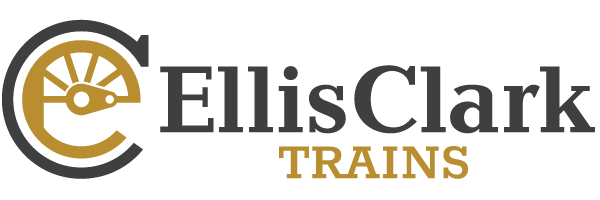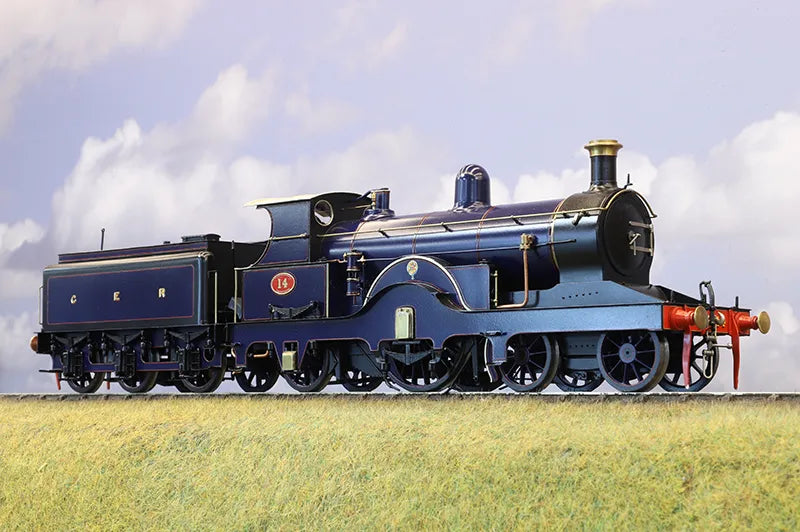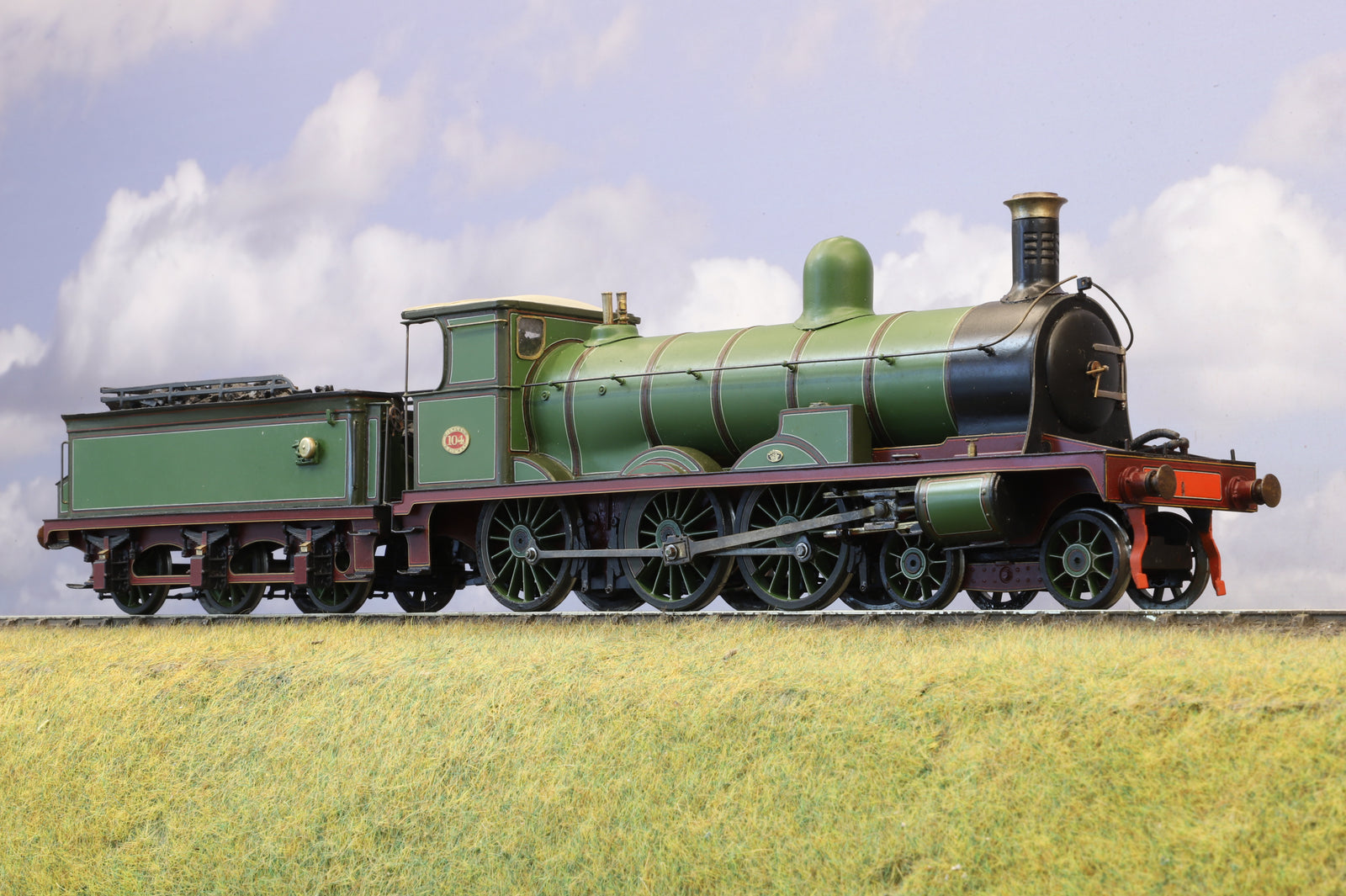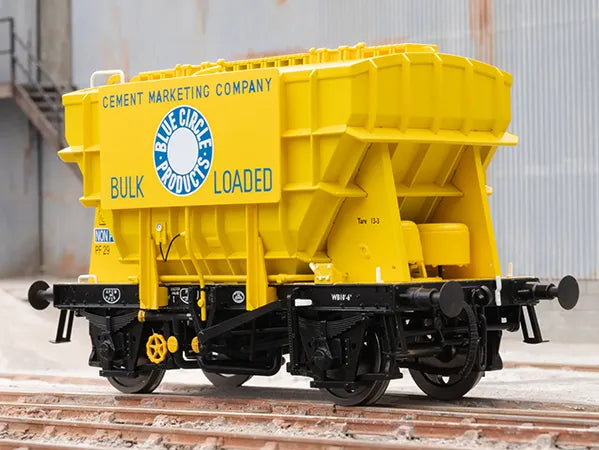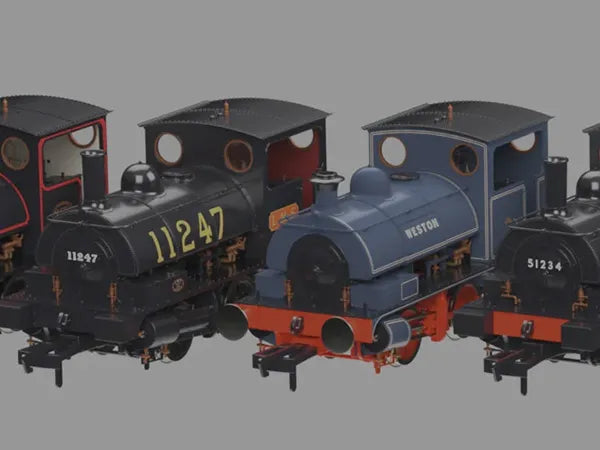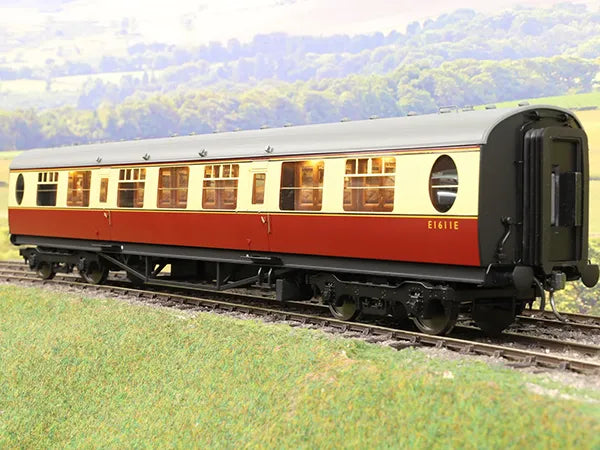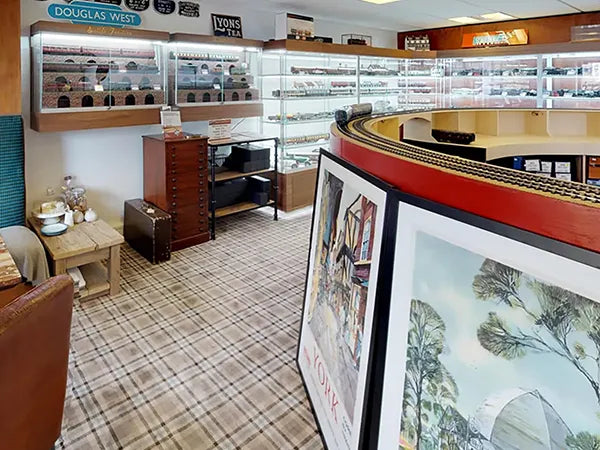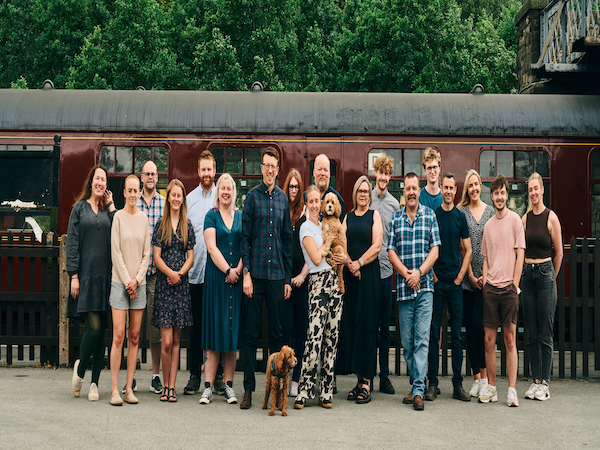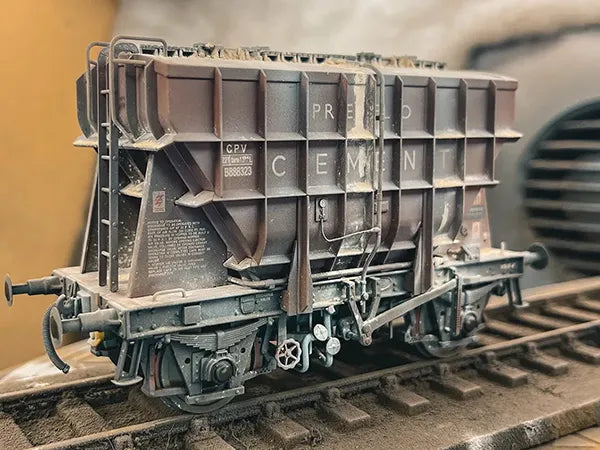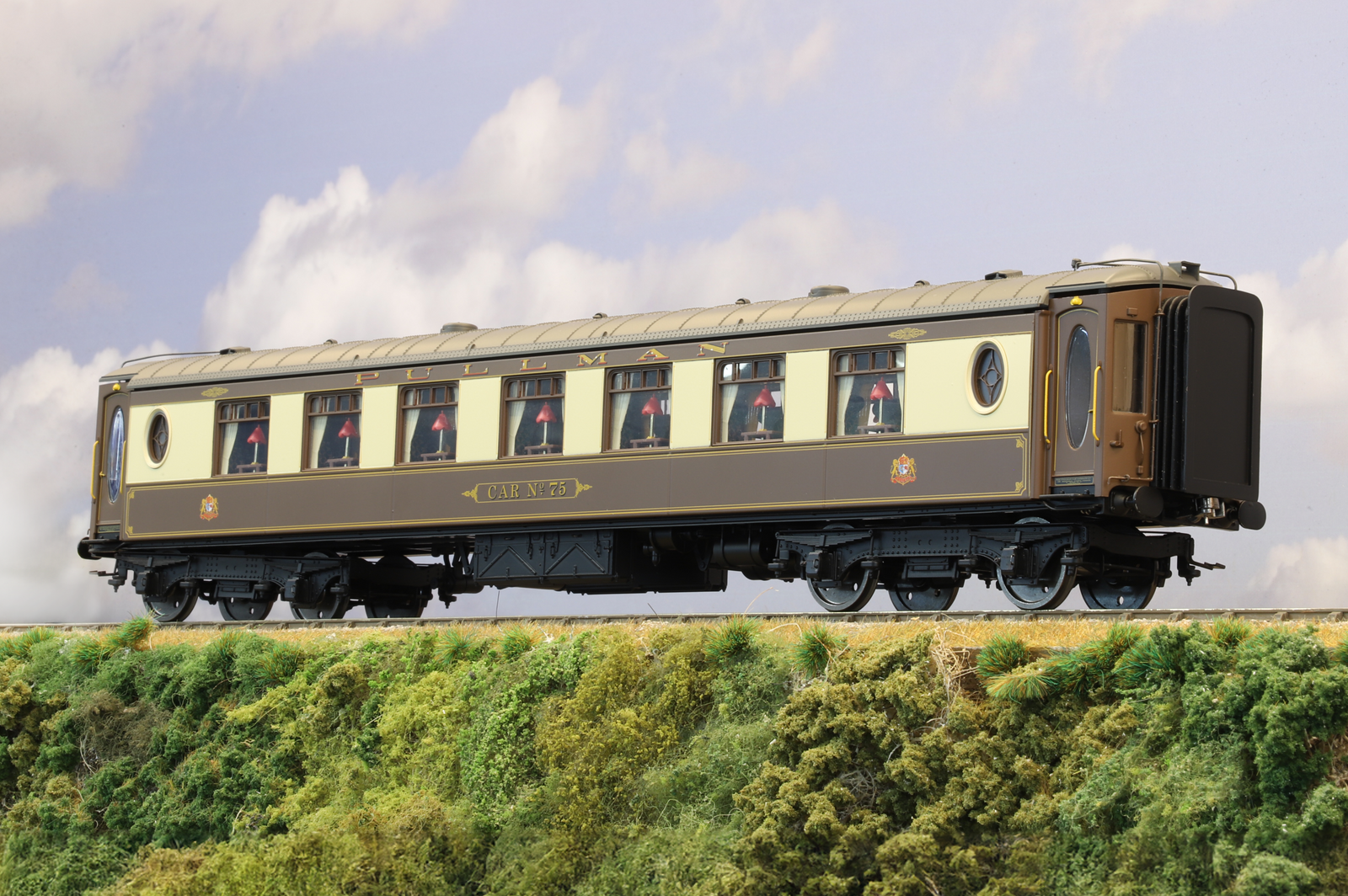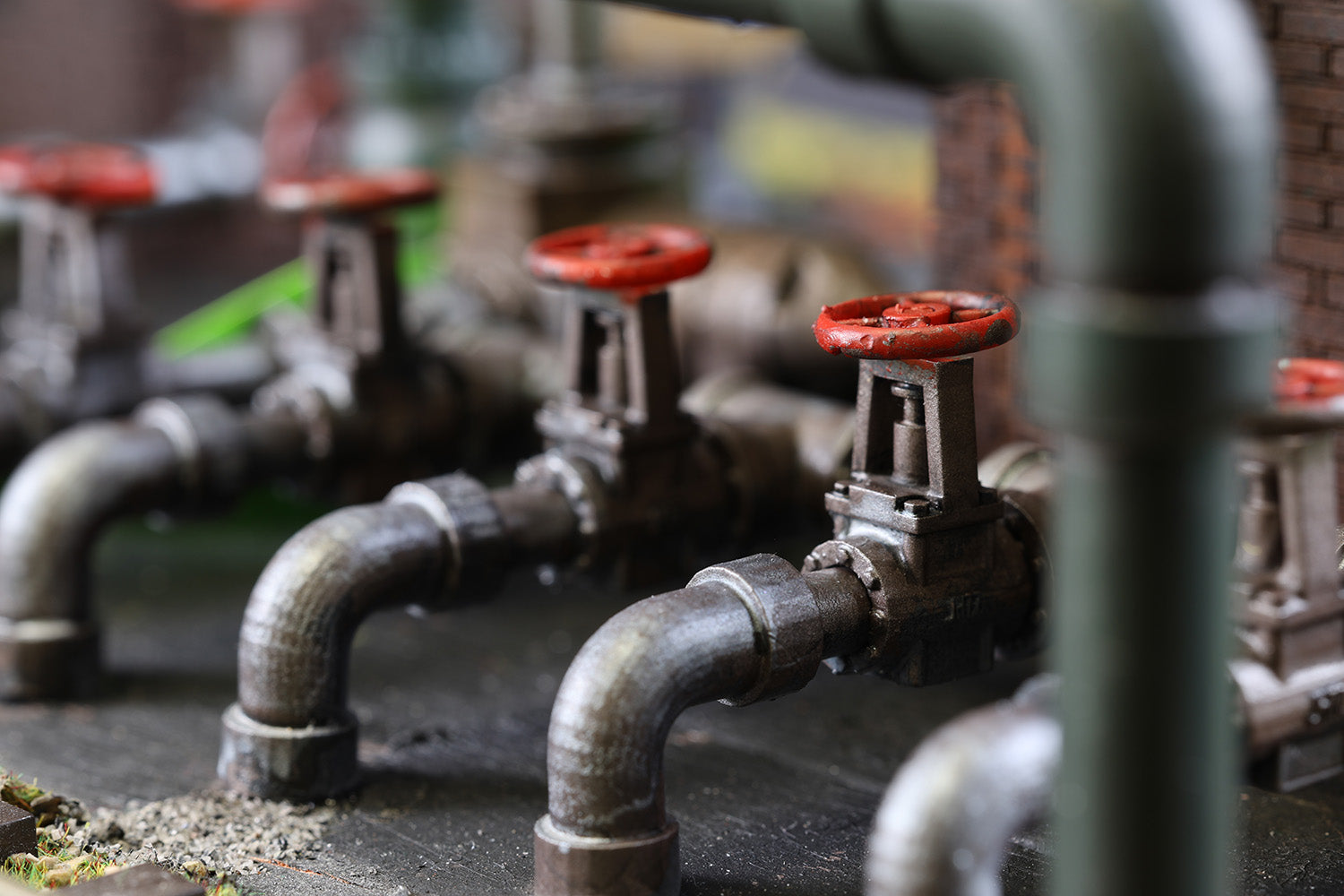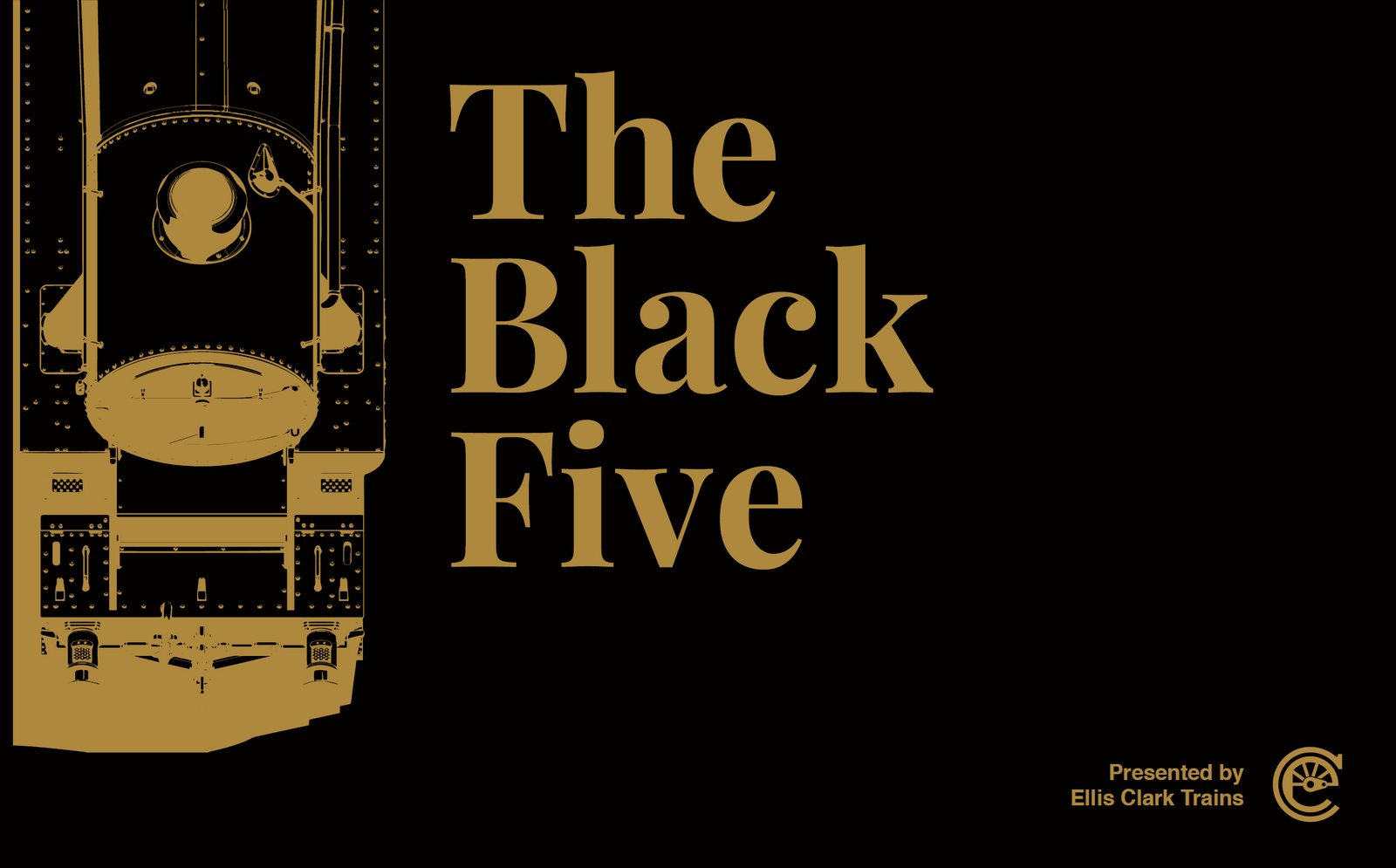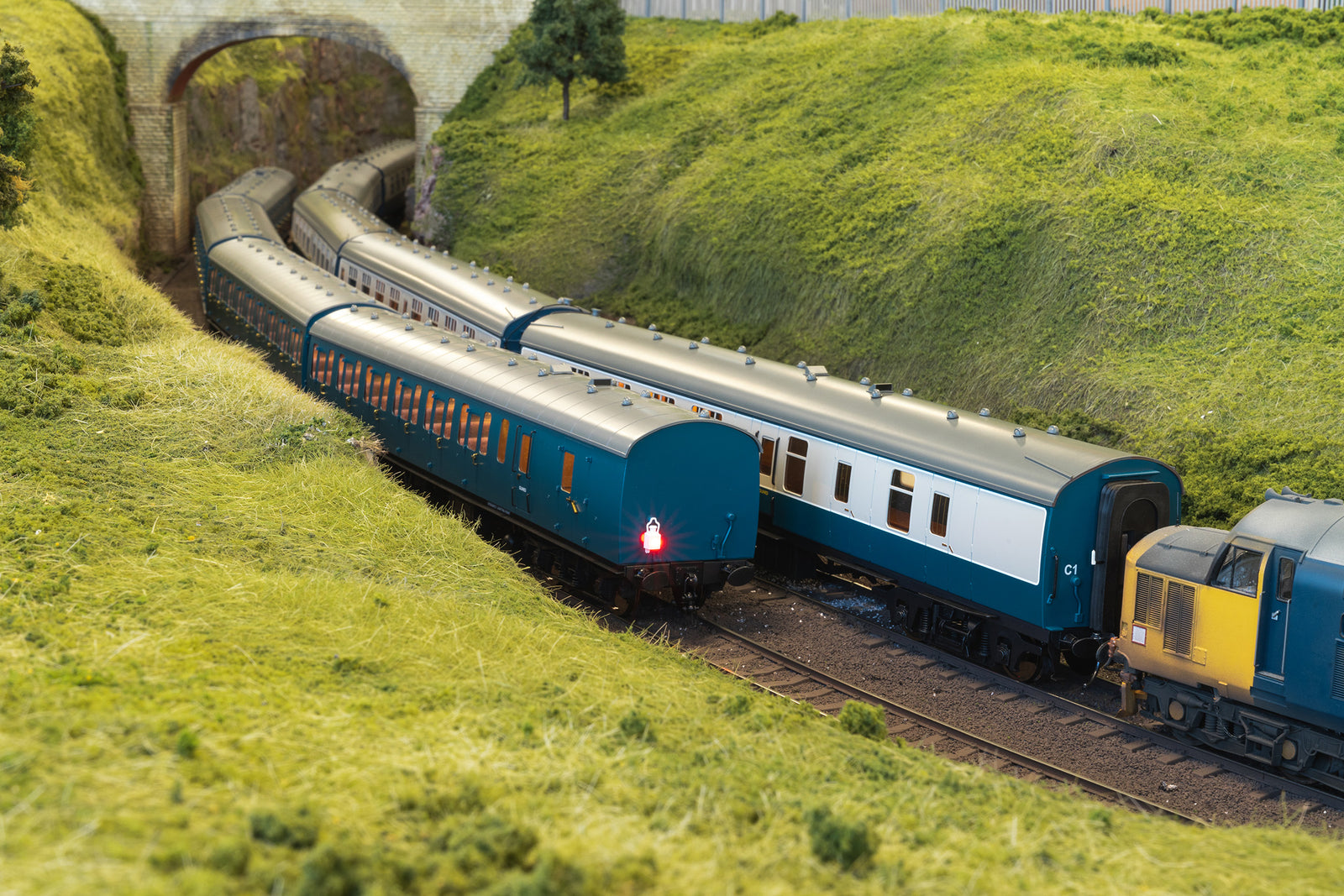The Pullman Car Company Limited was founded in Britain in 1915 from the former US-owned business. By the late 1920s, the company had established itself as the premier supplier of luxury vehicles and catering across all ‘Big Four’ railway companies. At a time of fierce competition between railway operators – and from the spread of private motoring – the Pullman Company aimed to make rail travel attractive by offering unparalleled standards of comfort and safety.
Pullman cars were instantly recognisable thanks to a family resemblance, regardless of their structural design. Their umber and cream livery, with gold lining and carriage names – together with lavish upholstery and distinctive table lamps – evoked an air of indulgence and opulence that was nonetheless accessible to many for a reasonable supplement.
A new breed
Always looking to the future, the Pullman company’s decision to invest in rolling stock innovation bore fruit in November 1927 when the Metropolitan Carriage, Wagon & Finance Co. Ltd. placed an order for 29 vehicles. These would be the first all-steel carriages to see service in Britain and were designed to cope with accelerated long-distance schedules. Delivery for the first 20 vehicles was slated for May 1928, at a maximum cost of £5,416 per car (£426,400 at 2024 prices).
The ‘all-steel K-type’ cars (as they were officially called in Pullman records) made their celebrated public debut from the commencement of the London and North Eastern Railway’s (LNER) summer timetable on Monday, 9 July 1928. This coincided with the launch of new ‘through’ Pullman services from the North connecting with short sea crossings to the Continent, in conjunction with the Southern Railway (SR).
Though limited in number (a total of 33 cars were delivered in three batches from two different builders between 1928 and 1930), the ‘Pullman de-luxe all-steel trains’ compared favourably with the wooden-framed carriages used by most British railway companies. The full panel beading and heavy angle trussing of earlier stock had given way to modern construction methods, including the use of prefabricated components assembled on special jigs. This allowed for a much quicker build time and ensured that the finished bodyshell with its galvanised steel panel sheeting was exactly to size – which, in turn, allowed interior components to be quickly fixed into position without fettling by hand.
The whole monocoque construction – where loads are supported by an object’s external skin, similar to an eggshell – provided a rigid structure able to withstand considerable compression stress at vital points. It also did away with the problems of fire risk and leaky roofs that were common in timber-bodied coaches. The successful four-wheel 10ft bogies originally introduced with the first batch of wooden-bodied Pullman cars in 1923 (also known as the ‘K-type’ in Pullman Company records, to distinguish them from other cars in the growing fleet) were fitted to all vehicles. The principal dimensions of the new cars were 63ft 10ins length over headstocks, 8ft 7ins width and 12ft 5ins height from the rail to the top of the roof. Each car weighed 40 tons. As one commentator remarked, the all-steel K-type cars were “a symbol of a sleek new world…the synthesis of Art and Industry”.
Entry into service
The first twenty cars were initially allocated to the LNER’s prestigiousThe Queen of Scots express, a service that had begun in 1923 when the first Pullman train ventured north from London King’s Cross to Newcastle asThe Harrogate Pullman. This train boasted the LNER’s longest non-stop journey at the time (199 miles from Kings Cross to Harrogate) and by 1925 had been extended to Edinburgh, whereupon it became known asThe Harrogate and Edinburgh Pullman.The Queen of Scots title was used from late 1927, when the train was extended further to serve Glasgow.
Five variants of the new K-type cars were allocated to the LNER, including:
4 x First Class kitchen cars:Belinda,Nilar,Phyllis andThelma
2 x First Class parlour cars:Agatha andSheila
6 x Third Class kitchen cars:Car nos. 67-72
4 x Third Class parlour cars:Car nos. 73-76
4 x Third Class brake cars:Car nos. 77-80
These vehicles represented the last word in style and elegance. They possessed the familiar slab-sided profile, striking livery, lavish gold lining and car names but with enhanced details such as larger picture windows and improved comfort, featuring the latest tastes in interior design. Third Class travellers were treated to much-improved fixed seating, with roomier interiors as well as ventilation and heating.
Two trains of eight cars each formedThe Queen of Scots, consisting of:
Third Class Brake car
Third Class Kitchen car
Third Class Parlour car
First Class Kitchen car
First Class Parlour car
Third Class Parlour car
Third Class Kitchen car
Third Class Brake car
The service ran non-stop from London (King’s Cross) to Leeds and then onwards to
Harrogate, Darlington, Newcastle, Drem, Edinburgh, Falkirk and Glasgow, with a corresponding down working. Supplementary fares ranged from one shilling (Third Class) to twelve shillings (First Class), in addition to the railway company ticket for the distance travelled. The seating capacity of each train was 248 passengers, comprising 44 First Class and 204 Third Class. The number of passengers carried was strictly limited to seating capacity, and seats were bookable in advance.
‘The Queen’, as it became affectionately known, quickly established itself as one of the premier Anglo-Scottish expresses and received a great deal of praise in the popular press, including fromThe Railway Gazette.
By March 1929, nine all-steel ‘K-type’ cars were ready for delivery to the Great Western Railway (GWR), on an ‘experimental venture’. Some of these vehicles were included in ‘Ocean Liner Express’ trains alongside regular GWR stock, running non-stop between London (Paddington) and Plymouth (Millbay) to connect with ocean liners on an ad-hoc basis.
In July of that year, the vehicles were marshalled intoThe Torquay Pullman Limited, an eight-car all-Pullman train offering both First and Third Class accommodation to Torquay and Paignton and aimed primarily at the leisure market.
The GWR’s pool of ‘K-type’ Pullman cars consisted of:
4 x First Class kitchen cars:Evadne,Ione,Joan andLoraine
5 x First Class parlour cars:Eunice,Juana,Lucille,Ursula andZena
In a bid to appeal to the lucrative American market, the Pullman Company published promotional brochures listing its latest cars, together with descriptions of their interiors. A series of artists’ impressions included a group of ten identical steam trains of eight or more Pullmans running side-by-side – an unlikely scenario, but an impressive marketing technique for its growing British fleet, which then totalled just over 200 vehicles. The images reinforced Pullman’s strong presence at a time when their cars could be found on all ‘Big Four’ main lines as well as on the London Underground (Metropolitan line), in southern Ireland and throughout much of continental Europe (even as far as Egypt) in conjunction with the Wagons-Lits Company.
Travelling in style
The ‘K-type’ interiors were highly praised. Individually decorated, they embodied the sleek simplicity of what later became known as Art Deco while retaining elements of the more stately style seen in earlier Pullman cars. They were described as “luxuriant in finish but fresh in tone”. Interior work was carried out by Maple & Co. (London) and Morrison & Co. (Edinburgh) and included 13 different designs of veneer. Among these was a much-publicised ‘Greek’ style, together with floral and geometric schemes in quartered mahogany and other exotic woods, with ivory accents. Four cars were finished with Macassar Ebony and satinwood veneers featuring rich vine decoration and a heraldic stag.
Below are contemporary descriptions of four of the cars, which provide a sense of the high-quality craftsmanship employed:
Thelma
“A First Class kitchen car with specially selected mahogany veneers quartered up to designs. The main marquetry motif is a floral decoration on coloured background embodying in all eleven
colours. A small floral motif is introduced in the pilasters which also have mauve banding. Inlaid
surround to mirrors in four colours. Lower panels are formed with mauve lines. The chairs are
covered with moquette, fawn ground with soft chintz colourings and the carpet is a blue trellis
pattern Wilton.”
Juana
“A First Class parlour car with [interior] decoration carried in mahogany throughout, with
specially selected veneers. The main marquetry motif is a modernised French version of the
palm carried out in six colours with predominant areas of green and blue. Mirror surrounds
have inlaid marquetry corners in four colours. The chairs are covered with moquette with blue
ground and chintz colourings and the carpet is a rose coloured Jaspé Wilton.”
Car No.69
“A Third Class kitchen car with finely veneered mahogany panelling inlaid with panel centres of
natural flowers on sycamore ground. The frieze is of Greek Scroll design in yellow and green.
The seats are covered in black and fawn moquette, and the floor is covered with rubber in
tones of green and black’.”
Car No.82
“A third-class kitchen car with mahogany panelling and Maltese Cross decoration. The seats are
covered in floral camel ground upholstery, and the floor is covered with green, black and
mottled green tiling”.
To entice travellers to Pullman trains, numerous artists – including Edwin Morton – were commissioned by the LNER to produce lavish publicity posters depicting the interiors. These often portrayed smart businessmen and sporty, coquettish young middle-class women. They presented the Pullman car as a comfortable domestic space that would appeal to large segments of the inter-war middle classes and skilled working classes.
The Pullman Company promoted travel as something to be enjoyed; soft furnishings and high-quality artwork together with silver cutlery, fine bone china and attentive service by uniformed staff were its hallmarks and contributed greatly to the success of its services. The company could boast royalty and visiting heads of state among its patrons; and the increasing popularity of Pullman travel in Britain, arguedThe Railway Magazine, showed that “the British passenger has no objection to the principle of the supplement, provided that he is satisfied with what he
receives in exchange for it.”
Difficult times
But storm clouds were gathering; the stock market crash of 1929 and the Great Depression that followed had a profound effect on the Pullman Company. Low patronage forced the GWR to reduceThe Torquay Pullman Limited to five cars in 1930 and to then withdraw the service altogether at the end of that summer’s timetable.The Queen of Scotswas also shortened, with some cars allocated to other LNER services, such asThe West Riding Pullman,The Harrogate Sunday Pullman andThe Eastern Belle – or held in reserve.
The GWR’s cars found a new home on the Southern Railway (Western Section) with the inauguration of that region’s own ‘Ocean Liner Express’ trains from London (Waterloo) to Southampton Docks in January 1931. These initially included two or three Pullman cars running alongside ordinary SR stock.
Despite the economic uncertainty, the Pullman management – closely supported by the SR –launched another new service from Waterloo calledThe Bournemouth Belle. This train had mostly Third Class accommodation and ran initially on weekdays (with a through portion for Weymouth) before settling down for the long term as a Sundays-only service, run as required.
Four new all-steel ‘K-type’ Third Class cars, unusually acquired through a hire-purchase arrangement, were introduced to ‘The Belle’. These were of an improved design compared to the 1928-29 cars and consisted of two Third Class kitchen cars (nos. 81/82) and two Third Class parlour cars (nos. 83/84). The last of the ‘K-type’ cars to be constructed, they were considered to be the Pullman Company’s best-appointed Third Class vehicles. Built by the Birmingham Railway Carriage and Wagon Company (BRC&W), their up-to-date features included improved ventilation with external sliding lights and newly patterned vestibule doors.
The latter part of the 1930s saw a modest recovery in Pullman services, but the outbreak of World War II in 1939 put paid to this. All LNER Pullman trains ceased, with many cars stored; others were painted overall brown and used as ordinary First Class carriages. ‘K-type’ carsIone,Joan andLoraine were painted green and took to GWR metals on special services conveying the Prime Minister as well as key War Office and US personnel.
By the end of the war, more than half the Pullman fleet had been damaged through enemy action, and four older vehicles allocated to the SR had been destroyed. Almost every car required significant works attention, the backlog amounting to around three years’ worth of maintenance.
.
Through the period of hardship that prevailed before, during and shortly after the war, the Pullman Car Company survived almost unchanged in its working arrangements. The spring and summer of 1946 saw some welcome improvements to rail services on both the SR and LNER, whose managements sought the help of the Pullman Company to reintroduce former services and initiate new ones. Despite the challenges of severely limited capital expenditure and a shortage of manpower and materials, the Pullman Company managed to refurbish 30 cars. The all-steel ‘K-type’ cars were among the first in line, and several examples joinedThe Devon Belle andThe Tees-Tyne Pullman, with others employed briefly onThe Golden Arrow between London and Dover. In the decades to come, the streamlined, modernist aesthetic of the late interwar period would give way to safety, comfort and convenience as the prime selling points of the new British Railways.
The BR era
Unlike other cars in the Pullman fleet, which were refurbished every five years to replace carpets and seat coverings and to install curtains, the all-steel vehicles were rarely remodelled. One exception was during the late 1950s when all the Third Class kitchen cars were earmarked for conversion to Brake cars, to top and tail new Pullman cars being introduced to King’s Cross services during 1960/61. At this point, the livery was also modified, with simplified lining and lettering to match the newer vehicles. Many also received the updated version of the Pullman coat of arms.
With improved timetables resulting from greater use of diesel traction and the intense usage of stock, the 1928/30 cars were now in need of replacement, although some remained in occasional front-line service, with one remaining in reserve until 1968. With the full complement of new Eastern Region cars in service by 1961, many all-steel ‘K-type’ cars were cascaded to the SR for use onThe Bournemouth Belle. This lasted until July 1967, by which time almost all were withdrawn, with the majority sent for scrap.
Fortunately, 11 cars – a third of the total constructed – survive today in preservation. A handful have been meticulously restored to their former glory, and run regularly onThe British Pullman, connecting with theVenice Simplon-Orient Express.
Dr Antony M Ford
The Pullman Society
Wiltshire, 2023
Named Trains
The Queen of Scots(LNER)
By late 1927, the LNER’sHarrogate and Newcastle Pullman had been extended to Glasgow and renamedThe Queen of Scots. Initially using a mixed group of vehicles, this service featured a new set of all-steel 'K-type' cars from 9 July 1928, although other vehicles of 1923-1927 construction were incorporated on occasion. Running on weekdays (bank holidays excepted) the train called at Leeds (Central), Harrogate, Darlington, Newcastle-upon-Tyne, Drem, Edinburgh (Waverley) and Glasgow (Queen Street). As with most Pullman services, the train was withdrawn at the outbreak of World War in 1939, although a few cars were requisitioned as ordinary vehicles and camouflaged in LNER livery.
Despite a resurgence of traffic following its celebrated reintroduction in 1948 – and a new set of Metro Cammell MK1 vehicles introduced to East Coast services during 1960/1 – competition from private motor cars and domestic airlines led to the withdrawal of the service from summer 1964.
Ocean Liner Expresstrains (GWR & SR)
From May 1929, ‘K-type’ Pullman cars began to appear alongside regular GWR stock in the formation of non-stop trains between Plymouth (Millbay) and London (Paddington). These ran as required, withEunice,Evadne,Loraine andJoan all seeing use. Following the cessation of GWR Pullman services at the end of 1930, its cars were transferred to the Southern Region (Western Section) for use in trains between London (Waterloo) and Southampton Dock. These trains initially used pairs of Pullman cars marshalled with regular First Class stock but later became all-Pullman services. They were often named after the cruise line with which they connected –The Cunarderserving Cunard Line services, andThe Statesmanfor United States Lines sailings – although many unnamed specials also ran. The trains often included veteran Pullman cars (of 1910–1914 vintage) alongside their newer cousins. The last Pullman boat train – consisting of just two cars attached to ordinary stock – ran in 1963.
The Torquay Pullman Limited(GWR)
Commencing on 8 July 1929, this was an eight-car all-Pullman train consisting mostly of ‘K-type’ cars. It ran on Mondays and Fridays from London (Paddington) to Newton Abbot, Torquay and Paignton, but poor loadings resulted in a reduction to five cars the following year before withdrawal at the end of summer 1930. The weight of the eight-car train (over 300 tons) necessitated the use of assisting engines over the steeply graded Devon Banks.
The Bournemouth Belle(SR)
This service began on 5 July 1931, running from London (Waterloo) to Southampton, Bournemouth Central and Bournemouth West. It initially ran daily (with a through portion to Weymouth on weekdays), calling at Poole, Wareham and Dorchester. It was withdrawn before the end of summer due to a lack of patronage and due to the economic downturn was reduced to Sundays only from September of that year. A feature of the new train was the introduction of four new all-steel 'K-type' cars (nos. 81-84).
During 1931, Pullman supplements ranged from one shilling Third Class to two shillings and six pence First Class. The daily summer/Sundays-only winter pattern of the ‘Belle' was repeated from 1932 to 1934, with an exception during the Whitsun holiday of 1932, when the service also ran on Friday 13, Saturday 14 and Tuesday 17 May; in the 1934/35 winter timetable, the train ran on Fridays, Saturdays and Sundays. A year-round daily service was established on 1 January 1936 and was only interrupted by World War II in 1939.
The allocation of Pullman cars to the service varied and was taken from a large pool comprising some of the finest and newest vehicles in the Pullman fleet – includingJuana andUrsula – but also some 8- and 12-wheel veterans.Car nos. 81-84 were transferred to the LNER in December 1933.
With steam giving way to diesel traction from the mid-1960s,The Bournemouth Belle – a heavy train of up to 12 vehicles – was withdrawn on 9 July 1967. The last run included all-steel 'K-type' carsPhyllis,Ursula andLucille, together withnos. 75 and76 – all of which are preserved today.
The Yorkshire Pullman(LNER)
In 1935, theWest Riding Pullman becameThe Yorkshire Pullman on account of an additional portion for Goole and Hull. Running from London (King's Cross) to Doncaster, Hull, Wakefield (Westgate), Leeds (Central), Harrogate, Bradford (Exchange) and Halifax (Old), it usually included a mixture of old and new vehicles, including the heavy 12-wheel cars of 1920.The Yorkshire Pullman was the first LNER Pullman service to be restored following World War II and by 1946 was running as a single train from London to Harrogate. Bradford and Hull portions were reintroduced from the start of the 1950s, by which timeThe Yorkshire Pullman was normally an 11-car train. New Pullman cars were gradually introduced throughout 1960/61, during which period trains were formed from a mixture of old and new vehicles. The service was unusual, as until 1971 it included both First and Second class cars; other services were First Class only.
Following the introduction of High Speed Trains, the two regular East Coast Pullman services were discontinued from 5 May 1978.
Sample Pullman formations including all-steel ‘K-type’ cars
LNERQueen of Scots (Jul 1928):Car nos. 77/69/73,Thelma,Agatha,Car nos.75/68/80
GWROcean Liner service (May 1929):Eunice,Evadne,Joan,Juana,Loraine,Lucille
GWRTorquay Pullman Limited(Jul 1929):Car nos. 40/60/34,Ione,Zena,Car nos. 61/59/41
LNERQueen of Scots Cars (Apr 1930):Car nos. 79/70/74,Belinda,Sheila,Car nos. 72/80
SR Bournemouth Belle (Jul 1931):Car nos. 41/60/81/83,Aurelia,Montana,Flora,Car nos. 82/ 40
SROcean Liner Express service (May 1938):Evadne,Lucille,Loraine
BRQueen of Scots (Apr 1948):Car nos. 77/70/75,Juana,Ione,Car nos. 83/81/79,Agatha,Car no. 67
BRYorkshire Pullman (Jun 1953):Car nos. 79/70/75/73,Ursula,Ione,Car nos. 71/78
BRQueen of Scots (Dec 1954):Car no. 83,Zena,Iolanthe,Joan,Car nos. 76/80/78/107
BRQueen of Scots (Jun 1955):Car nos. 77, 69, 73,Nilar,Sheila,Loraine,Car nos. 83/161
BRTees-Tyne Pullman (Jun 1957):Car nos. 209/58,Lucille,Belinda, Car no. 72,Onyx,Car nos. 32/248
BRRegency Belle (Apr 1964):Car no. 64,Evadne,Octavia,Lydia,Phyllis,Car nos. 334/84
BRBournemouth Belle (Apr 1966):Car nos. 63/75,Phyllis,Octavia,Lucille,Car nos. 60/58/64/ 61/62
BRBournemouth Belle (Jun 1966):Car nos. 83/61/64,Loraine,Eunice,Ursula, Car nos.75/34/ 65
BRBournemouth Belle (Jul 1967):Car nos. 75/61/64,Ursula,Phyllis,Lucille,Aquila,Car nos. 76/34
Further Reading
Antony M Ford’sPullman Profile No 3: The All-Steel ‘K-Type’ Cars (ISBN 978-1-906419-57-8) is a fantastic source of extra information on these fascinating carriages.
There are also some beautifully preserved examples located at the Keighley & Worth Valley Railway and the Bluebell Railway:
Our full Pullman range
|
Individual Coaches |
Coach Packs |
|||||||
|
Reference |
Name/No. |
Preserved? |
Bournemouth Belle 1966 Pack A |
|||||
|
Kitchen 1st Coaches |
Lorraine |
Eunice |
73 |
|||||
|
D25-01A |
Belinda |
75 |
Ursula |
|||||
|
D25-01B |
Nilar |
|||||||
|
D25-01C |
Thelma |
Bournemouth Belle 1966 Pack B |
||||||
|
D25-01D |
Phylis |
Yes |
81 |
Lucille |
Zena |
|||
|
D25-01E |
Lorraine |
67 |
||||||
|
D25-01F |
Ione |
Yes |
Can be Combined With Pack A to Create a 9 Coach Set |
|||||
|
D25-01G |
Evadne |
|||||||
|
D25-01U |
Unumbered |
Ocean Liner Set 1 |
||||||
|
Kitchen 3rd Coaches |
Evadne |
Lucille |
Lorraine |
|||||
|
D25-02D |
69 |
|||||||
|
D25-02E |
67 |
Ocean Liner Set 2 |
||||||
|
D25-02F |
70 |
Ione |
Eunice |
|||||
|
D25-02G |
71 |
|||||||
|
D25-02H |
81 |
Keighley & Worth Valley Preservation Pack |
||||||
|
D25-02U |
Unumbered |
Mary |
Ann |
|||||
|
Parlour 1st Coaches |
||||||||
|
D25-03A |
Agatha |
Yes |
Queen of Scots Set 1 |
|||||
|
D25-03B |
Shelia |
77 |
70 |
75 |
||||
|
D25-03C |
Eunice |
Juana |
Ione |
83 |
||||
|
D25-03D |
Ursula |
Yes |
81 |
79 |
Agatha |
|||
|
D25-03E |
Lucille |
67 |
||||||
|
D25-03F |
Juana |
|||||||
|
D25-03G |
Zena |
Yes |
Yorkshire Pullman |
|||||
|
D25-03U |
Un-numbered |
79 |
70 |
75 |
||||
|
Parlour 3rd Coaches |
73 |
Ursula |
Ione |
|||||
|
D25-04A |
73 |
71 |
78 |
|||||
|
D25-04B |
75 |
|||||||
|
D25-04C |
83 |
Queen of Scots 1957 |
||||||
|
D25-04D |
Mary |
Yes |
78 |
80 |
Belinda |
|||
|
D25-04E |
Ann |
Yes |
Juana |
83 |
Nilar |
|||
|
D25-04U |
Unnumbered |
|||||||
|
Brake 3rd Coaches |
Pack |
SKU |
||||||
|
D25-05A |
77 |
Bournemouth Belle 1966 Pack A |
D25-BMB-1A |
|||||
|
D25-05B |
78 |
Bournemouth Belle 1966 Pack B |
D25-BMB-1B |
|||||
|
D25-05C |
79 |
Yes |
Ocean Liner Set 1 |
D25-OLR-1 |
||||
|
D25-05D |
80 |
Ocean Liner Set 2 |
D25-OLR-2 |
|||||
|
D25-05U |
Unnumbered |
Keighly & Worth Valley Presentation Pack |
D25-KWV-1 |
|||||
|
Queen of Scots Set 1 |
D25-QOS-1 |
|||||||
|
Yorkshire Pullman |
D25-YKP-1 |
|||||||
|
Queen of Scots Set 1957 |
D25-QOS-2 |
|||||||
|
All Coach Packs Come in Presentation Boxes |
||||||||
Model specifications
- Super detailed etched brass sides with separately moulded ends and windows
- Fully detailed and decorated interiors
- Hand-painted finish
- Working table and ceiling lighting
- Super detailed compensated metal bogies
- Roller ball bearings fitted as standard
- Super detailed chassis and underframe
- Sprung buffers
- Coach destination board slots
- Fitted with Ellis Clark working drophead Buckeyes
Pricing
- £399 Per coach
- Three or more coaches for £375 each
- For the full range visit www.ellisclarktrains.com
